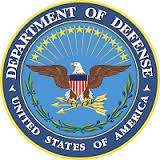The U.S. military and the commercial sector rely heavily on space-enabled capabilities, and the Defense Department must protect those assets and maintain U.S. superiority in the space domain, the deputy assistant secretary of defense for space policy said.
Stephen L. Kitay spoke as part of a panel discussion at an AFCEA luncheon in Arlington, Va. AFCEA is a nonprofit organization that serves as a forum for advancing professional knowledge and relationships in communications, information technology, intelligence and security.
”U.S. interest in space is expanding, and the threats are correspondingly expanding,” Kitay said, noting that China launched an anti-satellite weapon against one of its own satellites in 2007 to demonstrate that it can knock out satellites. In December, he noted, Russia boasted that it has a ground-based laser that can take out satellites. Cyber threats also figure into the equation. ”The threat is real and here,” he said.
DOD is no longer viewing space as a support function, but as a warfighting domain — a domain of potential crisis and conflict, he said. The department advocates for the creation of a sixth branch of the armed forces to meet that mission, he added. ”We believe we have a strategic imperative to create a Space Force,” he said. The Space Force would unify space-related activities within DOD, he explained.
Kitay noted that the Air Force, which used to be part of the Army, became a separate service in 1947 because it had become clear that in addition to supporting ground forces, air power also is necessary to maintaining air superiority.
In similar fashion, he said, the nation needs to maintain space superiority and protect freedom of operations in that domain. ”Future operations will likely start or extend into space,” he added, ”and we have to be ready for that.” A space-centric identity and culture would be another important aspect of creating a sixth military branch, Kitay said.
Funding legislation for creating a Space Force is pending in Congress. Kitay said additional money would go toward supporting the warfighter from the space domain, not toward adding more layers of bureaucracy.
Much of the Space Force could be built from existing structure within the services and DOD, he said. For example, the Space Development Agency most likely would be merged into the new service at an appropriate time after the Space Force is stood up. Some space assets residing in each of the services and the department would not be incorporated into the Space Force, he said, citing the National Reconnaissance Office as an example.
U.S. Space Command, which activated in August, would remain as a combatant command, focused on warfighting aspects, he said.






